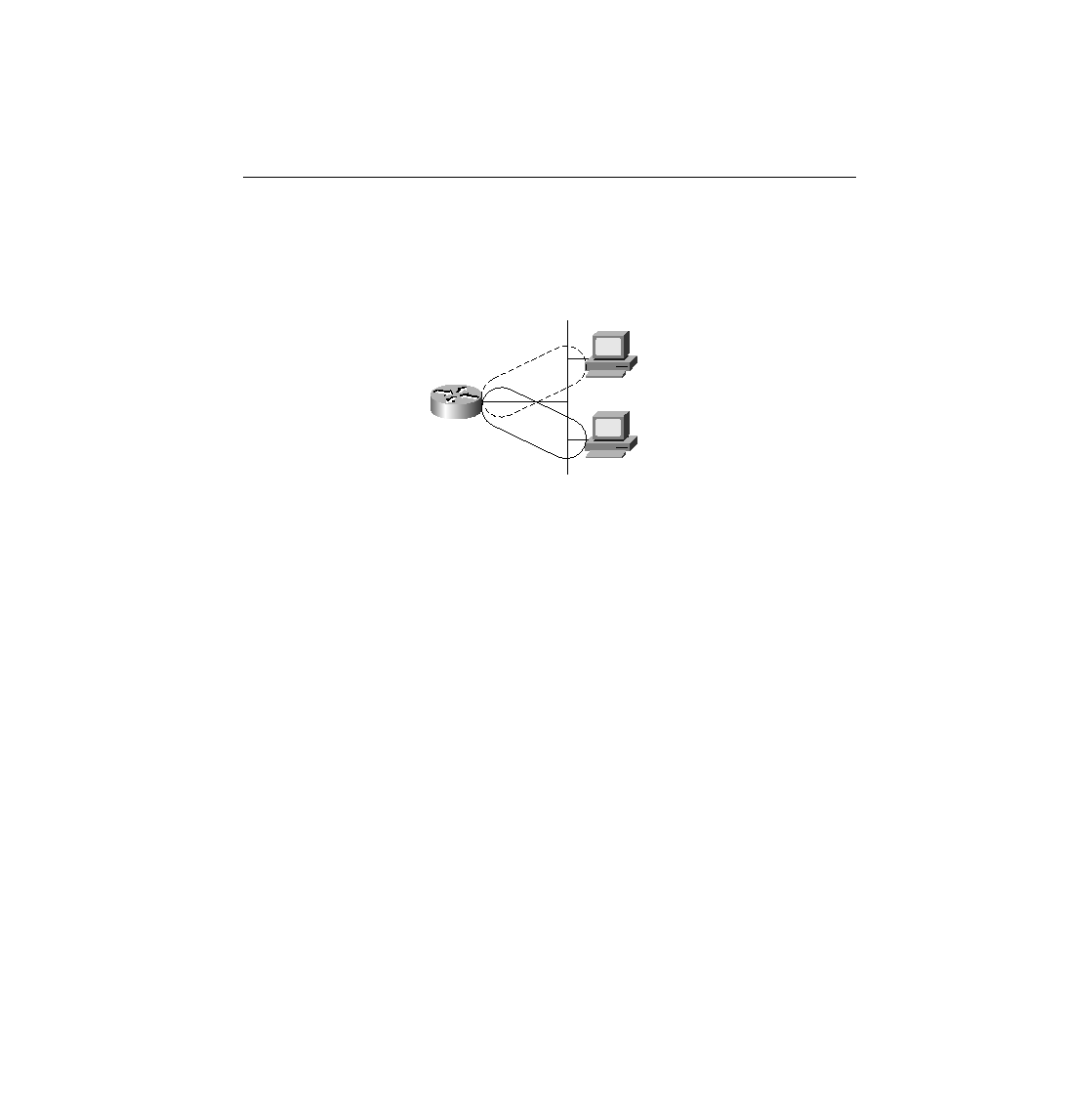
Server 2 uses SAP encapsulation. Network 4 devices use Novell-ether, and Network 5 devices
use SAP.
route refers to a next router in Network 4, the router uses Novell-ether encapsulation. If the
route refers to a next router in Network 5, the router uses SAP encapsulation. For RIP and
SAP updates, the router sends updates on to both IPX networks, using the two different
encapsulations, respectively. This is also true if the subinterface style of supporting multiple
encapsulations is used instead of secondary addressing.
encapsulation cannot communicate directly if they are using different encapsulations. Also,
clients and servers on the same LAN that happen to use different encapsulations will require
that their packets be routed by the router so that the encapsulation is changed. Therefore, there
are many advantages to not using multiple encapsulations.
experience is the best way to fully learn the details of configuration. In lieu of that, this section
lists commands, provides examples, and points out any tricky features. Table 5-34 and Table
5-35 summarize the more popular commands used for IPX configuration and verification. Two
configuration samples follow. The Cisco IOS documentation serves as an excellent reference
for additional IPX commands; the Cisco Press book Installing Cisco Network Devices also is
an excellent reference, particularly if you are not able to attend the instructor-led version of the
class.